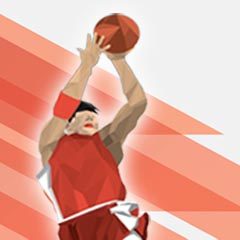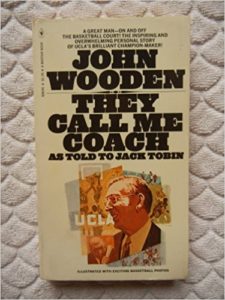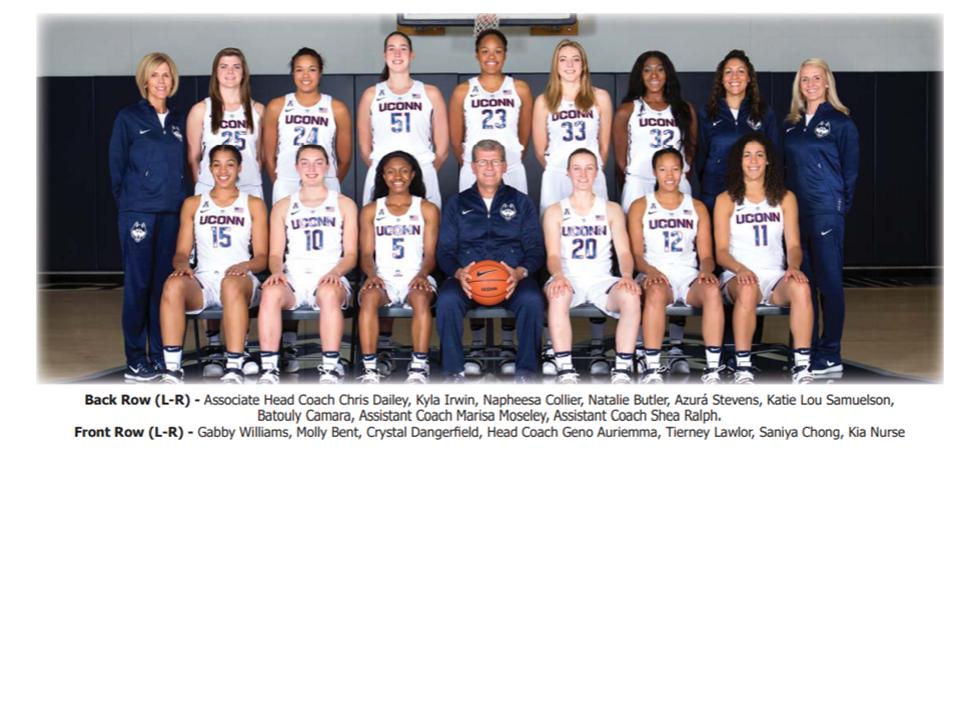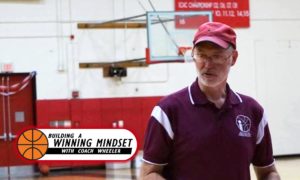 What does it mean for a player to “take their game to the next level”? It sounds like a good thing but without understanding the meaning it is hard to get there, right?
What does it mean for a player to “take their game to the next level”? It sounds like a good thing but without understanding the meaning it is hard to get there, right?
Plus… even if you have an idea of what the “next level” is for your basketball game, the question of “How do I take my game to the next level?” is still critically important.
This article will answer those questions (from Coach Wheeler’s perspective) and provide you with an example of a player who might Coach Wheeler could help “take their game to the next level.”
What are “the Levels”?
Below are the various levels from middle school through high school and even into college. If you are interested in seeing some of the skills that are typically developed at each level, check out Coach Wheeler’s article on a Player Progression Plan.
- Middle School
- High School – Player / non-starter… Losing team
- High School – Player / starter… Losing team
- High School – Player / non-starter… Winning team
- High School – Player / starter… Winning team
- High School – Player / starter… college-level skills (D3/Community College)
- High School – Player / starter… All-state-Honorable mention
- High School – Player / starter… All-state-2nd Team
- High School – Player / starter… All-state-1st Team
- College Starter – D3 / Community College
- College Player * – D2
- College Player * – D1
* There are obviously many levels within “college”. Most players won’t need to worry about this since even “best in state” does not mean that you are guaranteed a scholarship at the college level.
There could be even more levels if you include various AAU team or individual milestones (tourney wins, elite team participation, etc.). Again, this is a simple framework for players that are working on their game, probably at some level in high school, and looking to go “to the next level”.
HOW do I go to the “Next Level”?
As mentioned earlier, Coach Wheeler’s article on development of Player Progression Plan has lots of clues for players looking to improve.
Beyond skill development, WINNING is another way to move up a level or two. Players on teams that win get more attention from people who evaluate players.
Since basketball is a team game, if you want to win more games, you need to look at your role on the team. What does the team need to win more games? How well are you performing your role on the team? How can you do more? Or better?
You might have some ideas for these questions but don’t settle for your own answers. ASK others to get a better idea of what will take your game to the next level. ASK Coaches… your current coach (obviously), past coaches who have seen you play recently, AAU coaches, assistant coaches and even players whose basketball knowledge you respect.
When you ASK, you could say something like, “I want to take my game to the next level, what do you think I need to improve?” Be open to the answers but look for common answers that come up often. Also, don’t get upset if someone identifies a weakness that you are not proud of. Many people will only give you “good news” and it is important to value people who will “tell it like it is”. You don’t want sugar-coated feedback. You want the truth… and you need to act on the truth!
Coach Wheeler’s “Next Level real Player Example”:
 I coached this player as part of an AAU team when he was a freshman and he was a pretty good shooter. I won’t “name names” since I don’t want to embarrass him. Plus the advice could apply to a number of players.
I coached this player as part of an AAU team when he was a freshman and he was a pretty good shooter. I won’t “name names” since I don’t want to embarrass him. Plus the advice could apply to a number of players.
As a sophomore, our “example player” saw some good minutes on his varsity team but he played a secondary role to seniors who played a similar position.
When I saw him a year later in a summer league, he had improved his ability to drive and make shots. The team he played on did not have great players so he probably had to carry a bigger scoring load than he might on another team.
Next Level tip:
This player has pretty good court vision since he handles the ball most of the time and rarely dribbles into traps or places he might lose the ball. His court awareness is part of how he might take his game (and the success of his team) to the next level.
He should work with his team so that they move into scoring position as he drives. For example, wing shooters need to get open to potentially receive a kick-out pass. Big men need to recognize when he is going to drive and find a lane where they can be open if the opposition collapses on the driver. Even if the driver shoots, big men should be actively getting in position for the rebound.
How are all these things the responsibility of the player with the ball? First, basketball is a team game and even if you are the best player in the world the other players on the court need to be active. Michael Jordan did not win a single NBA championship before Coach Phil Jackson brought in the triangle offense and convinced MJ that involving others was in his best interest (especially if he wanted to win).
Second, if you are the primary ball handler (as this player is in our example) your key responsibility is to distribute the ball for the highest percentage shot possible. That means “getting the other players to move to the right places”. Sometimes the coach sets up plays for the team but more often players have to work together on the court in various situations.
This is just Coach Wheeler’s idea for how this player could get to “the next level”. As we mentioned earlier, he should be getting feedback from all the coaches in his life… and taking action.
Bottom line…
If you want to get better, you will have to take action. Basketball is highly competitive. You are not just competing within your school’s division. You are competing against everyone near your age who is playing basketball and trying to get to the next level. Remember, after your senior year in high school, no matter how good you are, the next year you are a freshman in college. From the big fish in the small pond to a small fish in THE OCEAN! The time to move to the Next Level is NOW. Don’t wait. Your future depends on it!
 I can still remember reading Coach Wooden’s book, “They Call Me Coach” back when I was in middle school or high school and I hope that I have lived up to at least some of the principles he taught. Wouldn’t it be great to learn from basketball coaches we consider the Greatest of all time?
I can still remember reading Coach Wooden’s book, “They Call Me Coach” back when I was in middle school or high school and I hope that I have lived up to at least some of the principles he taught. Wouldn’t it be great to learn from basketball coaches we consider the Greatest of all time?

 Coach Dave Wheeler, in association with InviteOnlyBasketball.com and Parisi Speed School of NH, will be conducting a one-day preseason basketball camp on Saturday Nov.11th, 2017.
Coach Dave Wheeler, in association with InviteOnlyBasketball.com and Parisi Speed School of NH, will be conducting a one-day preseason basketball camp on Saturday Nov.11th, 2017. What does it mean for a player to “take their game to the next level”? It sounds like a good thing but without understanding the meaning it is hard to get there, right?
What does it mean for a player to “take their game to the next level”? It sounds like a good thing but without understanding the meaning it is hard to get there, right? I coached this player as part of an AAU team when he was a freshman and he was a pretty good shooter. I won’t “name names” since I don’t want to embarrass him. Plus the advice could apply to a number of players.
I coached this player as part of an AAU team when he was a freshman and he was a pretty good shooter. I won’t “name names” since I don’t want to embarrass him. Plus the advice could apply to a number of players.